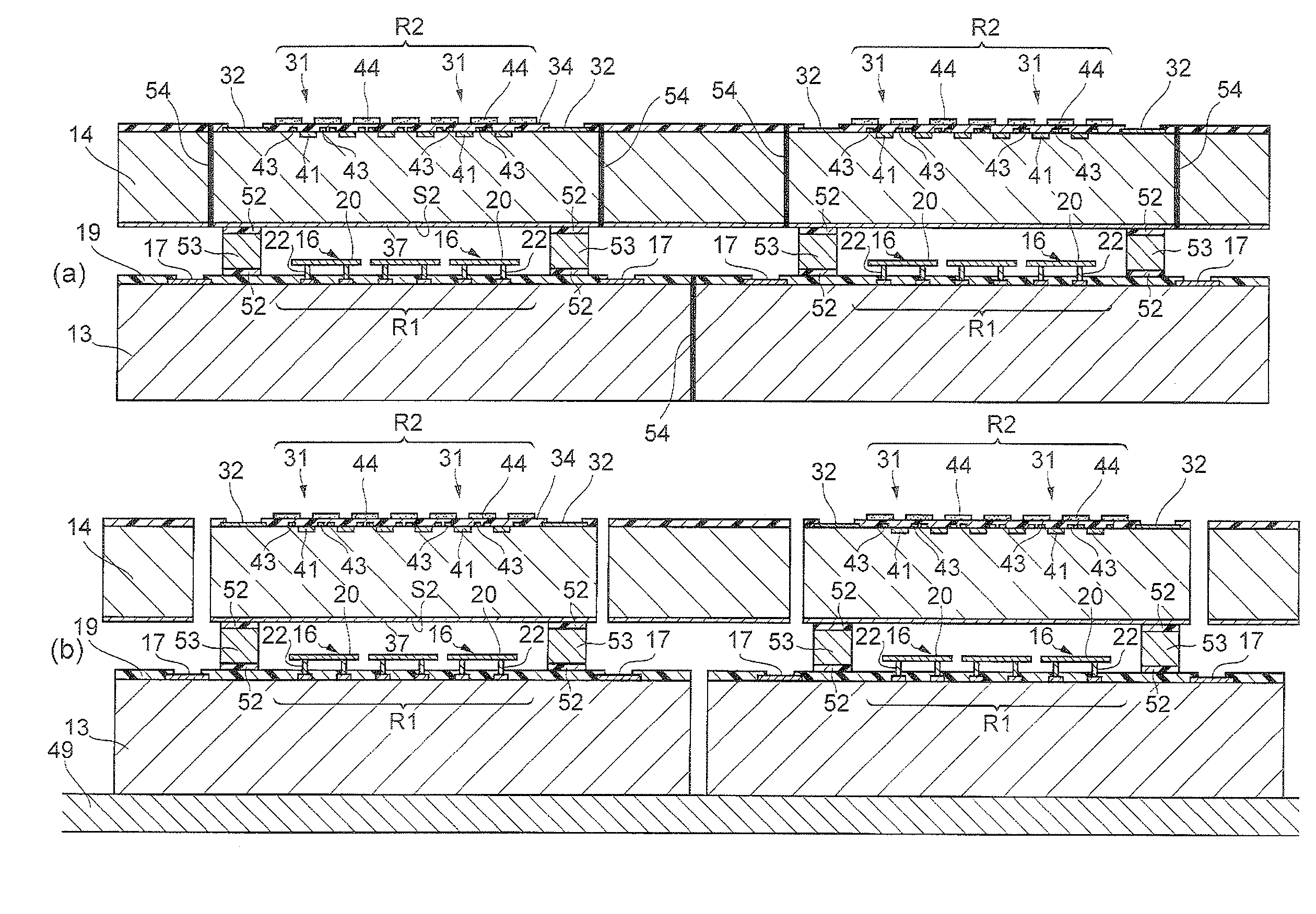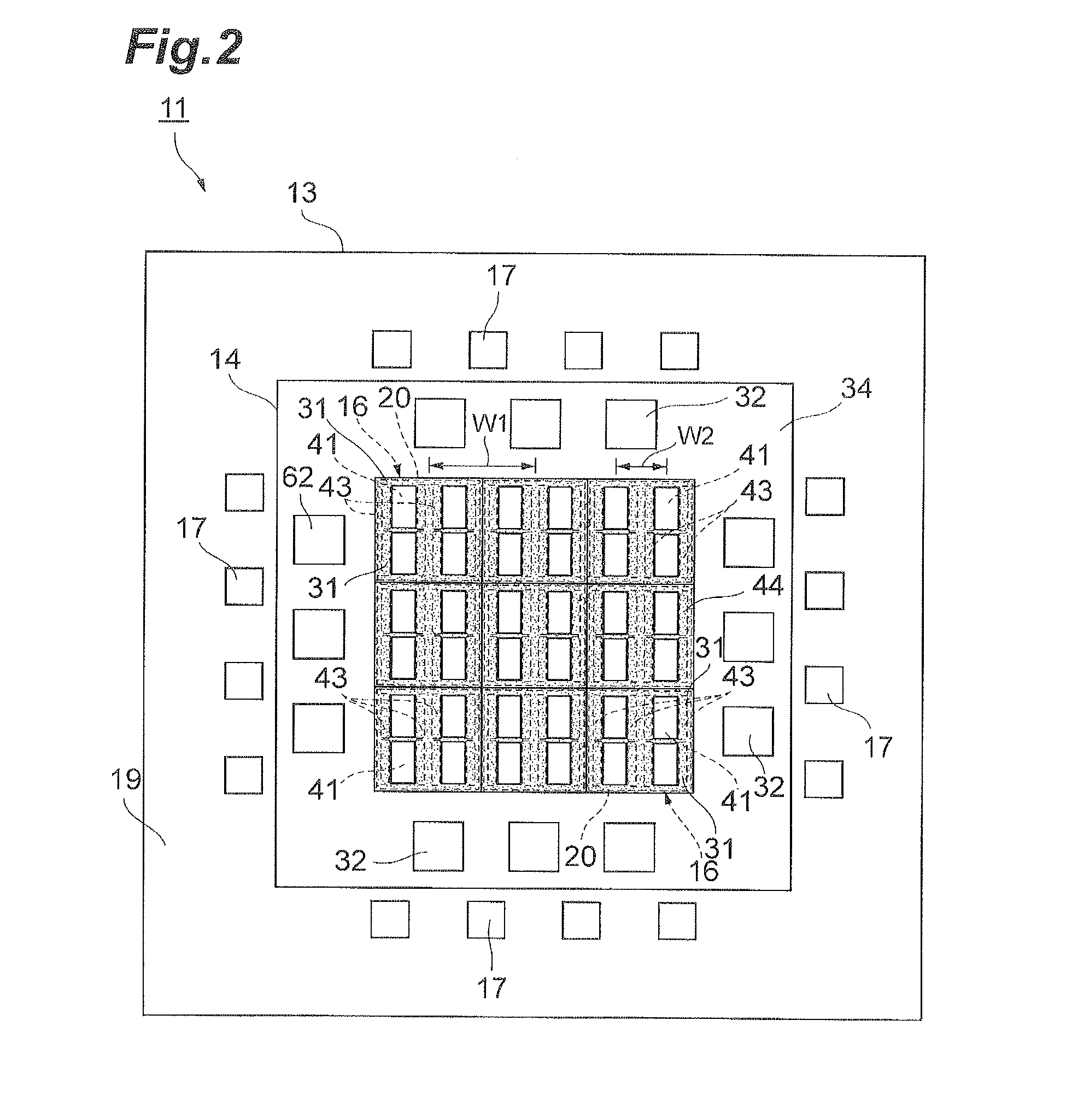Composite sensor and composite sensor module
- Summary
- Abstract
- Description
- Claims
- Application Information
AI Technical Summary
Benefits of technology
Problems solved by technology
Method used
Image
Examples
first embodiment
[0026]FIG. 1 is a sectional view illustrating the composite sensor module in accordance with a first embodiment of the present invention. As depicted, this composite sensor module 1 comprises a composite sensor 11 and a lens 12. The composite sensor module 1 is a module used as a motion sensor which detects entries of people into a predetermined area and the like according to thermal and range images.
[0027]Connected to the composite sensor module 1 in use is a light source unit 5 including a light source 2 such as a laser or a light-emitting diode, for example, a light source drive circuit 3 for driving the light source 2 at a high frequency, and a control circuit 4 for outputting a driving clock for the light source drive circuit 3. The light source 2 emits a modulated wave subjected to light intensity modulation in the form of a square wave or sine wave. The modulated wave is reflected by a surface of an object to be detected K and enters the composite sensor 11 through the lens 1...
second embodiment
[0051]FIG. 7 is a sectional view illustrating a composite sensor module 50 in accordance with a second embodiment of the present invention. As depicted, the composite sensor module 50 in accordance with the second embodiment differs from the first embodiment in the joint structure between the first and second substrates 13, 14 in the composite sensor 51.
[0052]More specifically, the composite sensor 51 has no depression 36 on the other side of the second substrate 14, so that the second substrate 14 has a flat surface on the other side. The optical filter film 37 is formed all over the surface on the other side of the second substrate 14. For joining the first and second substrates 13, 14 together, foil materials 52 and a lid material 53 are used. The foil materials 52, each of which is a layer combining a buffer metal with a low-melting metal, are made of Ti / Pt / Au or Cr / Ni / Au, for example. The foil materials 52 are arranged like rings on one side of the first substrate 13 and the ot...
PUM
 Login to View More
Login to View More Abstract
Description
Claims
Application Information
 Login to View More
Login to View More - R&D
- Intellectual Property
- Life Sciences
- Materials
- Tech Scout
- Unparalleled Data Quality
- Higher Quality Content
- 60% Fewer Hallucinations
Browse by: Latest US Patents, China's latest patents, Technical Efficacy Thesaurus, Application Domain, Technology Topic, Popular Technical Reports.
© 2025 PatSnap. All rights reserved.Legal|Privacy policy|Modern Slavery Act Transparency Statement|Sitemap|About US| Contact US: help@patsnap.com



